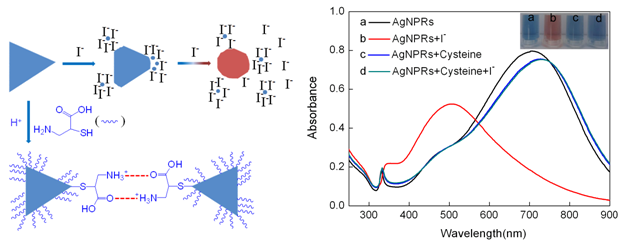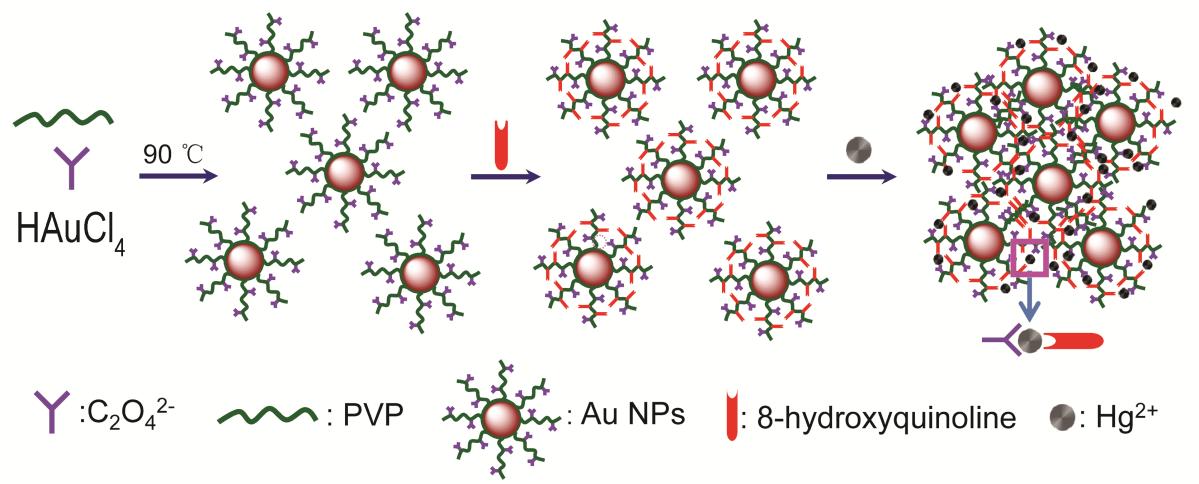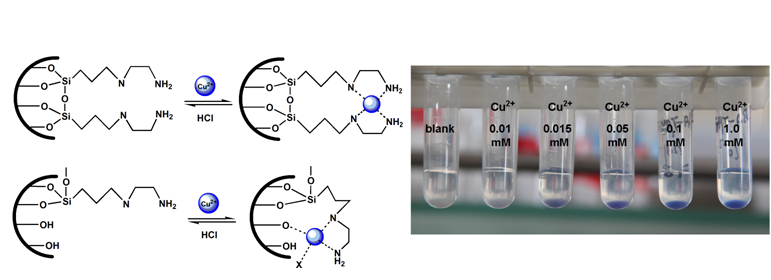With the development of industrialization, many environmental pollution accidents happened, like heavy metal ions and toxic small molecules being found constantly in water environment. Heavy metal ions and toxic small molecules were discharged into rivers, lakes and other water environments, which not only ruined the ecological environment system, but also poisoned drinking water and made dreadful harm to human health.

Detection of Cysteine through Anti-etching Mechanism
The research group led by Prof. Aiguo Wu from the Ningbo Institute of Industrial Technology (CNITECH), CAS, developed a rapid qualitative and quantitative detection of small molecules of cysteine by silver nanoprisms, through anti-etching mechanism. The detection limit reached 10 nM. The real samples were tested effectively by using this detection method (Nanoscale, 2014, 6, 10631-10637). Al3+, related to Alzheimer's disease, was rapidly detected by using functional silver nanoparticles through the aggregation mechanism. The lowest detection concentration of Al3+ in aqueous solutions reached 0.16 μM (Talanta, 2014, 122, 272-277). Hg2+ was rapidly detected through aggregation mechanism by using gold nanoparticles functionalized by acetate, polyvinyl pyrrolidone and 8-hydroxy quinoline, and the detection limit was 10 nM (Chemical Communications, 2014, 49, 6447-6450 on the back cover) 
Detection of Hg2+ through Aggregation Mechanism
A kind of mesoporous molecular sieve was used in rapid detection by naked eyes and adsorbing copper ions. The detection limit reached 0.95 ppm, and the maximum adsorption capacity was 27.22mg/g. Furthermore, the dual functional materials could be circularly used (Dalton Transactions, 2014, 43, 8461-8468). 
Colorimetric Detection and Efficient Removal of Copper Ions
Prof. Aiguo Wu aiguo@nimte.ac.cn
Research Group Url: http://english.nimte.cas.cn/rh/rd/newmaterials/nb/nb_research_interests/
All Images by 
![]()




